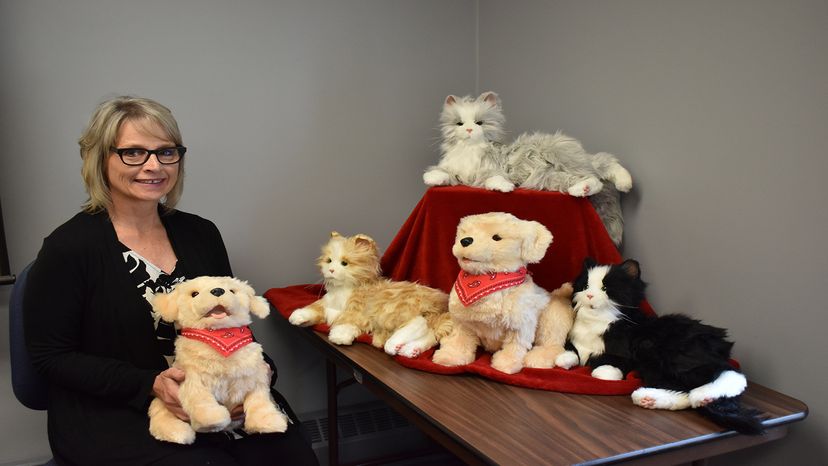
In 2004, a Japanese company came out with a "biofeedback medical device" called PARO (which stands for "physically assistive robot"). Shaped like a harp seal, PARO has soft, white fur and black eyes rimmed with dense eyelashes and topped with expressive eyebrow spots. It is heated and weighs about as much as a pet cat — it moves and makes noises and blinks its eyes like a live seal, too. PARO sounds like a robotic stuffed animal, and it is. But it costs over $6,000 is because it's a robot designed with a very specific job in mind: keeping older adults company.
PARO was one of the first successful applications of robotics in healthcare, and although it's still on the market nearly two decades later, there have been huge advances in robotics over that time, and it's no longer the only device of its kind available. In 2015, Hasbro spinoff Joy for All started making robotic cats and dogs for seniors. In the early days of the COVID-19 pandemic in 2020, as the state of New York was shutting down their day programs for seniors, the state ordered over a thousand of the robot cats and dogs to distribute to the people they could no longer help in person.
Advertisement
